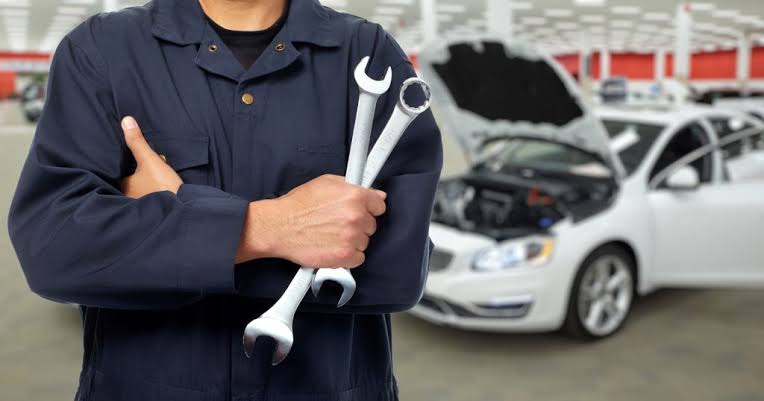Your car isn’t just a mode of transportation—it’s an investment, a lifesaver, and a crucial part of your daily routine. Whether you’re commuting to work or embarking on a weekend road trip, keeping your car in top shape ensures safety, reliability, and longevity. But maintaining your vehicle doesn’t have to be a complicated process. With a bit of knowledge and consistent effort, you can keep your car running smoothly for years to come.
Regular Maintenance Checklist
Routine maintenance is the backbone of car care. Completing these essential tasks on schedule ensures your car stays safe and runs efficiently:
1. Oil Changes
Oil is the lifeblood of your engine, keeping the moving parts lubricated and functioning properly. Old or dirty oil can lead to wear and tear, reduced fuel efficiency, and, eventually, engine damage. Check your owner’s manual to determine how often your car needs an oil change—this is typically every 5,000 to 7,500 miles.
2. Tire Rotation and Alignment
Tires wear down unevenly depending on their position in your car. Rotating them regularly (about every 5,000 to 8,000 miles) ensures even wear, improving traction and extending tire life. Proper alignment is equally important, as misaligned wheels can cause uneven tread wear and affect handling.
3. Brake Inspections
Your brakes are your car’s primary safety system. Don’t wait until you hear screeching sounds! Schedule regular brake inspections to ensure pads, rotors, and fluid levels are in good condition. On average, brake pads should be replaced every 25,000 to 70,000 miles, depending on driving habits.
4. Check Your Lights
Headlights, brake lights, and turn signals play a major role in your safety, especially during nighttime driving or bad weather. Test all your lights monthly and replace burnt-out bulbs immediately.
5. Maintain Your Air Filters
Air filters keep dirt and debris out of your engine, enhancing performance. A clogged air filter can reduce fuel efficiency and impact acceleration. Check and replace your engine and cabin air filters every 12,000 to 15,000 miles (or as recommended by your car’s manual).
Seasonal Maintenance Guide
Different seasons bring unique challenges for your car. Preparing your vehicle for the changing weather can save you from unwanted stress—and costly repairs.
Winter
- Winterize Your Vehicle: Swap to winter tires for better grip on icy or snowy roads.
- Inspect Your Battery: Colder temperatures can reduce battery capacity, so ensure it’s charged and functioning well.
- Check Antifreeze Levels: Proper antifreeze levels help prevent your engine from freezing in harsh winter conditions.
Summer
- Check the Cooling System: Summer heat can strain your cooling system, leading to overheating. Flush and refill your coolant if needed.
- Inspect the AC: Make sure your air conditioning system is in top condition as temperatures rise.
- Don’t Forget the Tires: Hot pavement can weaken tires. Ensure they’re properly inflated to reduce the risk of blowouts.
Fall and Spring
- Perform a seasonal inspection during these transition periods. Look for weather-related damage, test your windshield wipers, and top off any fluids that might have been depleted.
DIY Maintenance Tips
You don’t need to be an auto mechanic to handle basic car maintenance tasks. Here are some easy-to-do tips that keep your car in good health:
1. Check and Top Up Fluids
Learn how to check your engine oil, brake fluid, and transmission fluid. Topping up low levels at home is quick and cost-effective. Always use the fluids recommended in your owner’s manual.
2. Replace Wiper Blades
If your windshield wipers are leaving streaks or smudges, it’s time to replace them. This simple DIY task ensures clear visibility during rain or snow.
3. Inspect Your Car Battery
Regularly check the battery for corrosion on the terminals and ensure the connections are secure. Clean it carefully with a mixture of baking soda and water if necessary.
4. Check Tires
Use a tire pressure gauge to check your tire pressure monthly, or before long trips. Refer to the recommended pressure listed in your car’s manual or on the driver-side door frame.
5. Fix Minor Scratches
A product like a clear bra, such as those offered in Salt Lake City, can help protect your car’s paint from scratches and wear over time. Applying it yourself or with professional help can make a big difference in maintaining your car’s appearance.
Importance of Professional Services
While DIY maintenance is empowering, some tasks are best left to professionals:
- Complex Repairs: Engine diagnostics, transmission issues, or electrical system problems require specialized tools and expertise.
- Comprehensive Inspections: Schedule a full-service inspection annually to catch potential problems early.
- Timing Belt Replacement: A snapped timing belt can cause significant engine damage. Professionals can replace it before it becomes a problem.
Partnering with a trusted auto shop ensures your car gets the necessary care it deserves.
Longevity and Cost Savings
One of the biggest benefits of consistent car maintenance is extending the life of your vehicle. When you address minor issues promptly, you avoid major breakdowns that could cost thousands of dollars to fix. Additionally, a well-maintained car holds its value better, which is a huge advantage if you decide to sell or trade it in the future.
Technology and Car Maintenance
Technology has revolutionized car ownership, making maintenance easier than ever. Consider leveraging these tools:
- Car Maintenance Apps like CarFax or Drivvo send reminders for oil changes, tire rotations, and more.
- Diagnostic Tools such as OBD-II scanners give you access to your car’s error codes, so you can identify issues immediately.
- Smart Features in modern cars, like sensors that monitor tire pressure or engine performance, provide real-time updates on your vehicle’s health.
Staying proactive with the help of technology ensures you’re informed and in control of your car maintenance.
Conclusion
Maintaining your car doesn’t have to feel overwhelming. By following these essential tips, you’ll keep your vehicle in top shape, ensure safety, and even save money down the road. Start small—check your oil, inspect your tires, or schedule an appointment for professional servicing.
